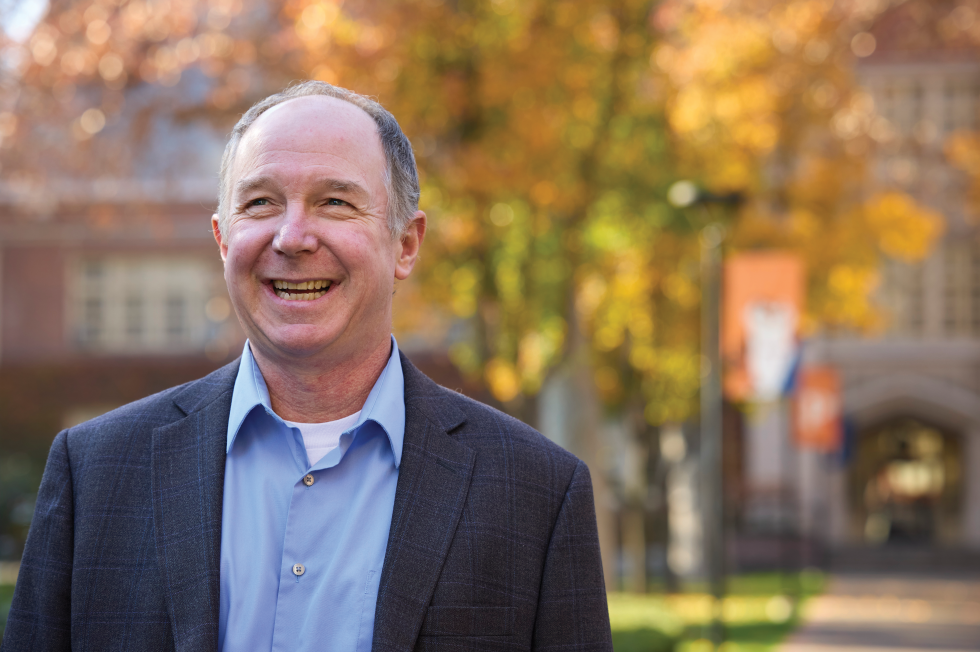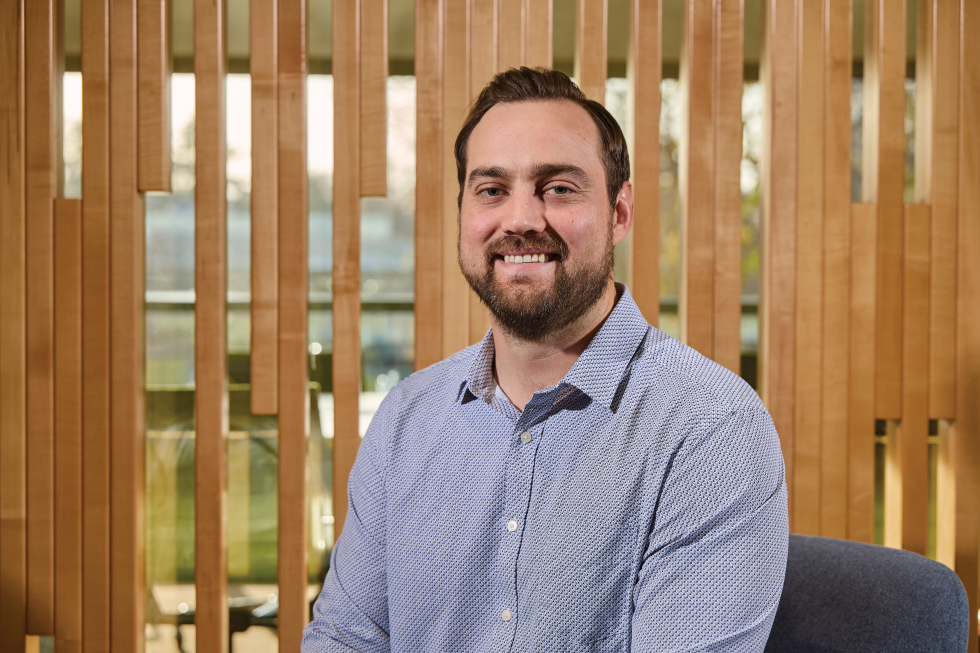Those who forecast the direction of the U.S. economy have their eyes on empty office buildings. In September, two commercial real estate experts predicted that the vacant space resulting from work-from-home policies will put banks at risk and collapse tax revenues for large and mid-size cities around the country.
Consider two local building sales. In 2018 and 2019, Bay Area investor Brent Lee bought 2868 Prospect Park and 10901 Gold Center Drive in Rancho Cordova for a total of about $43 million. Last year, he sold them for a combined $23 million, according to reports. (Neither Lee nor the buyer responded to requests for comment.) Or take 2555 Natomas Park Drive in South Natomas, a gleaming 87,000-square-foot space finished in 2019. It was still listed as available for lease as of November.
By mid-2024 the region’s office vacancy rate could hit an all-time record, says Bob Shanahan, Sacramento-based research director at real estate services firm Colliers. Already 34 percent of offices on Highway 50 East and 39 percent in South Natomas are empty, Colliers data show. “Twenty years ago we were building these business parks and large occupiers were coming in, filling the space. I mean, there were virtual cities out in business parks. Boy, they’ve been pretty well evacuated,” says John Jackson, chairman and CEO at Jackson Properties.
The office market might be even worse off than in the 2008 recession. Back then developers knew the empty space would eventually get absorbed. “Will there be demand for that much office in the future?” asks Jackson.
The collapse of office real estate is one of several pandemic-related shifts that make predicting the economy’s direction a fraught endeavor. Commercial real estate’s predicament could tip the local and national economies underwater or be a blip as they continue to rebound. Overall, though, experts say the region’s economy has so much going for it that it will stay strong through at least the first half of 2024. Here’s what’s coming and how businesses can prepare.
The changing science of economic prediction
Forecasting recessions has gotten more complicated post-pandemic. For example, economists long paid close attention to so-called “yield curve inversions,” periods when short-term interest rates on Treasury bonds are higher than long-term ones, the reverse of what happens in normal times and a sign investors believe the economy will slow down. With one exception, inversions have predicted recessions to follow within six months to two years going back to 1955 (and that one false positive predicted a slowdown, not a recession).
Except now maybe they don’t. In August, the yield curve was one of the most inverted on record, and the current inversion had lasted 17 months as of November, with no recession in sight. But some economists say the dynamics are different now for a variety of technical reasons. “Whatever’s been attached to recessions as rules of thumb in the past — it’s an empirical pattern. But empirical patterns are not laws of nature,” former Federal Reserve economist Claudia Sahm said recently.
Storm fronts
Economic forecasts, like weather reports, have best- and worst-case scenarios at the far right and left sides of the probability bell curve. For the 2024 state and local economy, a few worrying factors argue for a left-side outcome.
Downtowns are hugely important to regional economies, say experts who study the data. The pandemic delivered a body blow to Sacramento’s core, from which it’s not fully recovered.
Almost three-quarters of state employees were still working three or more days from home as of September, according to a state dashboard. That’s showing up in less foot traffic in the downtown ZIP code — smaller lunchtime crowds, fewer purchases at retail stores and the like. In 2023 office worker foot traffic was a little over half the 2019 numbers, says Scott Ford, economic development director for the Downtown Sacramento Partnership.
Thomas Pogue, director of the University of the Pacific’s Center
for Business and Policy Research, says state economic development
funds may help certain regions around California recover from the
economic slump. (Photos by Fred Greaves)

Meanwhile, the pandemic-fueled rise in e-commerce is gone. That means a slowdown in San Joaquin County’s red-hot transportation and warehousing sector. Nationally, online sales as a share of overall retail sales have dropped by a little over 1 percent as more people have gone back to shopping in stores, says Thomas Pogue, director of the University of the Pacific’s Center for Business and Policy Research — not a huge fall in percentage terms but a big plunge in raw package numbers.
And a lot of household spending is being supported by borrowed money. Nationally, total household debt — mortgages, credit cards, auto loans and more — is at an all-time high of $17 trillion. The mid-year 2023 Sacramento Business Review reported that regional credit unions and regional banks’ charge-offs — loans that they’ve written off as losses — have risen for at least four straight quarters.
And state population trends have taken a troubling turn. Housing costs, remote work and maybe even politics are leading more people to leave California — including, ominously, an increasing proportion of higher-income people, according to an October report from the Public Policy Institute of California. With immigration rates also low by historical standards and a bigger share of people 65 or older, the state’s working-age population is declining in percentage terms.
Shorter term, SBR chief economist Sanjay Varshney says he’s closely watching the holiday retail season. If consumer spending ends up being weak, it’s going to show up sometime next year in a slowdown. For most economists, “I don’t think recession is off the table,” he says.
Or blue skies
Harry Truman’s crack about the lack of one-armed economists — those who won’t say “on the one hand this, and on the other hand that” — still holds, meaning experts have also spotted lots of positive signs for the region.
Ford says that though downtown office worker foot traffic is only half the pre-recession number, downtown visitors have come back fast — visitor foot traffic is at 88 percent of the 2019 number. He credits the city’s investment in new civic amenities — the Golden 1 Center and the expanded convention center and theater complex — for that. The Golden 1 Center itself had about 2.7 million visitors over the prior 12 months as of October, higher than the same period in 2019, he says.
Even better, residents could eventually replace employees as drivers of downtown foot traffic. The 2,600 residents in the 66 blocks that define the core central business district (an area bounded by H Street to the north, 16th to the east, N to the south and the Sacramento River to the west) are just 400 more than in 2019, Ford says. But within about a 1-mile radius of downtown, several thousand new residential units, like the 436-unit Capitol Towers complex, have been built. That matters: On average residents spend three to five times more at ground-floor businesses than do office workers, says Ford.
And while the state is losing people, the opposite is happening locally. The populations of nine of the 10 counties in the region will grow through at least 2027, according to economic forecasts by the state’s Department of Transportation. (Only Nevada County is projected to have flat growth over that period.) Placer remains the fastest growing county in the state, and among the state’s larger counties, Sacramento County is second only to Riverside in its potential for both population and job growth, according to Caltrans.
The Sacramento-area unemployment rate hasn’t budged from about 4 percent since March 2022, according to the mid-2023 SBR, which covers El Dorado, Placer, Sacramento, Sutter, Yolo and Yuba counties. San Joaquin and Solano counties have slightly higher rates, at 6 and 5 percent respectively, but Caltrans projects they’ll stay flat through 2026. And the agency forecasts an inflation rate of below 3 percent across the region in 2024.
Pogue says an infusion of state economic development money — called the Community Economic Resilience Fund — offers a boost. The initiative gives an initial $5 million to each of 13 economic regions around the state, with more to follow, letting each region design its own economic development plan to provide good-paying jobs in sectors that promote the clean-energy economy. One goal of the effort is to better position regions to be eligible for federal money — like the CHIPS Act of 2022 that promotes domestic semiconductor manufacturing, says Pogue of UOP.
Bob Shanahan, research director for Collier’s, predicts the
Capital Region’s office vacancy rate may hit an all-time record
by mid-2024.

At the national level, the Congressional Budget Office forecasts slow, steady growth of about 1.5 percent in 2024 and 2.4 percent in 2025. (Over the course of 20 years, the CBO’s average error rate has been nearly spot on with what actually happened.) In October 2023, the National Association of Business Economists published the consensus of 40 professional forecasters, who for 2024 predict lower inflation, interest rate cuts and unemployment at 5 percent or less.
One area business consultant senses companies aren’t pulling back going into 2024. “What I’m seeing is companies all over the Sacramento region, from Woodland to El Dorado Hills, spending money on their companies to stay best positioned to compete regionally and nationally,” says Sacramento business coach and consultant Nick Warner.
Riding it out, no matter the conditions
The Scandinavians say there’s no such thing as bad weather, just bad clothes. What’s that mean for your business, no matter what comes in 2024?
Recessions typically don’t last more than a year when they show up, so companies should be prepared to get through a year of downturn, says Varshney. “If I can get through that one year, I know there’s light at the end of the tunnel and things will eventually get better on the other end,” he says.
That means having cash on hand. Right now that’s not a money-loser as it would have been in the past, says Bill Slaton of Sacramento management consulting firm Leading Resources Incorporated. Indeed, brokerage houses are offering business money market accounts at interest rates of up to 5 percent. He also recommends planning for a recession by modeling how you’d get through a downturn — or even how you might take advantage of a recession to gain market share.
With labor tight, it’s also a good time to invest in your people. Warner says companies around the region are spending money getting leadership coaching because the payoffs are huge: higher retention rates, better efficiency, happier people and a stronger organizational culture.
The region’s leaders will have a huge role in strengthening the economy longer term — such as working together on proposals that turn those empty office spaces into amenities that bring people back downtown, says Ford. And it’s not even clear that all those empty offices will stay that way for long. Shanahan points to an October KPMG survey of about 1,300 CEOs globally that says almost two-thirds believe their employees will return to the office five days a week in the next three years.
“The office isn’t dead,” Shanahan says. “I know there’s a lot of doom and gloom out there, but it’s not all dark clouds.”
Stay up to date on business in the Capital Region: Subscribe to the Comstock’s newsletter today.
Recommended For You

‘Mystery City’ Unveiled
Proposed community envisions the good ol’ days; critics call it sprawl
Sramek, 36, is founder and CEO of California Forever, which seeks to build a large new community in Solano County. While cities or large unincorporated communities have been built from scratch before in California and elsewhere, what makes this potential metropolis unusual — and has stirred public controversy — are the people behind it and its backstory.

The Bosch Boom
Bosch’s acquisition of TSI Semiconductors in Roseville is expected to significantly impact the region’s economy, workforce and educational institutions
In August 2023, Bosch acquired TSI with the intention of producing silicon carbide chips, a major element in the production of electric vehicles. Bosch is betting that the global demand for silicon carbide chips will continue to grow and intends to invest $1.5 billion in the new fabrication.

Give Bees a Chance
Farmers restore habitat for native pollinators
As California grew into a vast agricultural region during the early 20th century, native grasslands, forests and riparian habitats were gradually replaced by farmlands and orchards. Though green things thrive on farms as a matter of business, there’s very little biodiversity on a traditional farm — and not much room for pollen specialists.

Beyond the Bottle
UC Davis is a hub for breast milk science and innovation
As a chemist of food science, J. Bruce German was accustomed to observing the tiniest things: protein particles, bacteria, mucin layers and much more invisible to the naked eye. But nothing prepared him for his first experience in the neonatal intensive care unit at UC Davis.




